The team at the University of Washington in the US drew inspiration from the insects to create its low-powered camera system.
Its beetle-cam can stream up to five frames per second of low-resolution, black and white footage to a nearby smartphone.
The research was published in the Science Robotics journal.
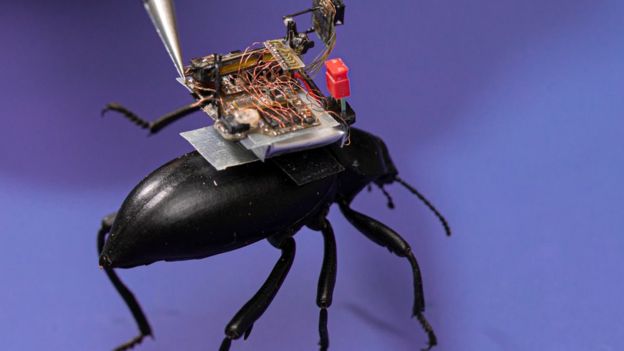 Images from the rig are sent to a smartphone via Bluetooth
Images from the rig are sent to a smartphone via Bluetooth
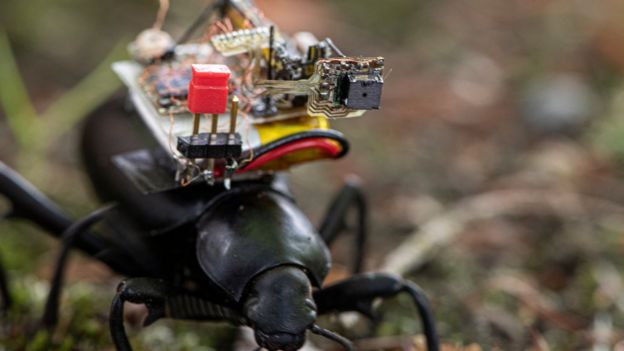 Image captionThe camera’s mechanical arm can pivot 60 degrees
Image captionThe camera’s mechanical arm can pivot 60 degrees
The entire camera rig weighs just 250 milligrams, which is about a tenth of the weight of a playing card.
While the sensor itself is low resolution, capturing just 160 by 120 pixel images, it is mounted on a mechanical arm that can shift from side to side.
That allows the camera to look side to side and scan the environment, just like a beetle, and capture a higher-resolution panoramic image.
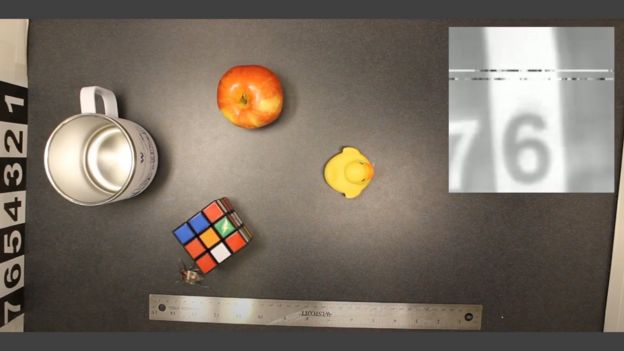 The image at the top right was captured by the camera on the beetle, which is stood next to the Rubik’s cube
The image at the top right was captured by the camera on the beetle, which is stood next to the Rubik’s cube
To conserve battery life, the researchers included an accelerometer in the system, so that it only takes photos when the beetle is moving.
This way, the camera was able to operate for six hours on a full charge.
The beetles were not harmed and “lived for at least a year” after the end of the experiment.
The researchers used what they had learned to produce an independent insect-sized camera robot.
The team claims it is the world’s “smallest terrestrial, power-autonomous robot with wireless vision”.
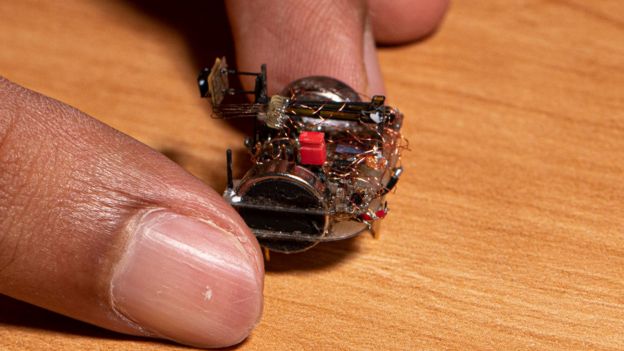 Image captionThe team has developed a tiny camera robot
Image captionThe team has developed a tiny camera robot
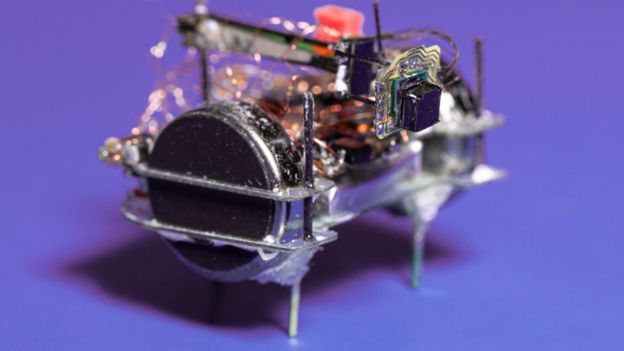 Image captionThe tiny bot moves by vibrating
Image captionThe tiny bot moves by vibrating
Rather than wheels, the robot moves by vibrating and can travel about three centimetres a second.
Shyam Gollakota, senior author of the research, acknowledged that tiny camera robots could introduce new surveillance concerns.
“As researchers we strongly believe that it’s really important to put things in the public domain so people are aware of the risks and so people can start coming up with solutions to address them,” he said.
Source:https:bbc.com/news
